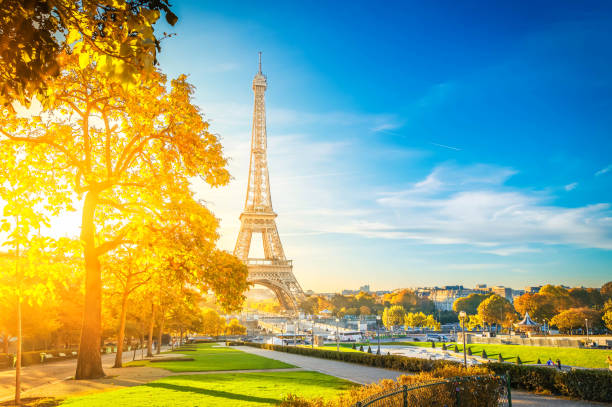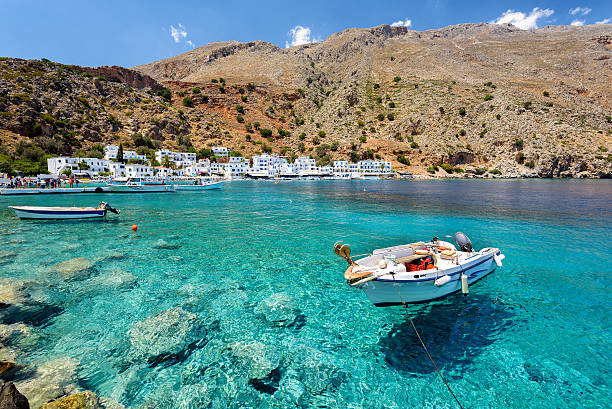Europe, with its rich history, diverse cultures, and breathtaking landscapes, offers a travel experience unlike any other. From the icy fjords of Norway to the sunny shores of Spain, each country on the continent presents unique charms and adventures. Let’s embark on a virtual tour in Europe, highlighting key countries and what makes them special.
1. France: Romance and Culture

France is synonymous with romance and culture. Paris, the capital, is home to iconic landmarks such as the Eiffel Tower, Louvre Museum, and Notre-Dame Cathedral. The French Riviera boasts glamorous beaches and towns like Nice and Cannes. Regions like Provence and Burgundy, located beyond Paris, are famous for their vineyards and picturesque landscapes. France’s culinary scene is equally impressive, featuring exquisite pastries, cheeses, and wines.
2. Italy: Art, History, and Cuisine

Italy offers a blend of art, history, and mouth-watering cuisine. Rome, with its ancient ruins such as the Colosseum and the Roman Forum, provides a glimpse into the past. Venice’s canals and Florence’s Renaissance art, including masterpieces by Michelangelo and Leonardo da Vinci, captivate visitors. The Amalfi Coast and Tuscany celebrate their stunning scenery and world-class wines. Italian cuisine, with its pasta, pizza, and gelato, is famous globally.
3. Spain: Vibrant Culture and Stunning Coastlines

Spain is known for its vibrant culture and beautiful coastlines. Barcelona dazzles with its modernist architecture by Antoni Gaudí, while Madrid, the capital, offers rich cultural experiences at the Prado Museum and Royal Palace. The southern region of Andalusia is famous for flamenco dancing and historic sites like the Alhambra in Granada. Spain’s coastline, including the Costa del Sol and the Balearic Islands, offers stunning beaches and a lively nightlife.
4. Greece: Ancient Ruins and Island Bliss

Ancient ruins and beautiful islands are renowned, making Greece the cradle of Western civilization. Athens, the capital, is home to the Acropolis and Parthenon. The islands, such as Santorini and Mykonos, are famous for their stunning sunsets and crystal-clear waters. Greece’s culinary scene, featuring dishes like moussaka and souvlaki, reflects its rich cultural heritage.
5. Germany: History and Innovation

Germany, a country of contrasts, combines historical landmarks with modern innovation. The vibrant arts scene and historical sites like the Berlin Wall make Berlin a renowned capital. Munich, in Bavaria, offers traditional beer gardens and proximity to the scenic Bavarian Alps. Germany’s contributions to engineering and technology are evident in its automotive industry and high-speed trains. World-class museums and festivals, such as Oktoberfest, reflect the country’s rich cultural heritage.
6. Switzerland: Alpine Beauty and Neutrality

Switzerland is famous for its breathtaking alpine scenery and political neutrality. Zurich and Geneva are major financial hubs, offering a blend of cosmopolitan life and natural beauty. The Swiss Alps are ideal for skiing, hiking, and breathtaking views. The picturesque lakes, including Lake Geneva and Lake Lucerne, add to the country’s charm. Residents of Swiss cities enjoy a high quality of life and benefit from excellent public transportation.
7. Austria: Classical Elegance

Austria is renowned for its classical music heritage and stunning landscapes. Vienna, the capital, is famous for its imperial palaces, classical music heritage (including figures like Mozart and Beethoven), and elegant coffee houses. Salzburg, the birthplace of Mozart, offers charming streets and baroque architecture. There are hiking and skiing opportunities in the Austrian Alps. Austria’s cultural and historical sites make it a captivating destination for history and music enthusiasts.
8. Netherlands: Canals and Culture

The Netherlands is known for its charming canals, tulip fields, and vibrant cities. Amsterdam’s canals, museums, and historic architecture are major attractions. The country’s commitment to art is evident in the works of Dutch masters such as Rembrandt and Van Gogh, housed in various museums. The Dutch countryside, with its windmills and tulip fields, provides a picturesque escape from urban life. The Netherlands is also recognized for its progressive culture and innovative design.
9. Sweden: Natural Beauty and Modernity

The natural beauty and modern lifestyle of Sweden are celebrated. Stockholm, as its capital, spreads across several islands and offers a mix of historic sites and contemporary design. Malmö and Gothenburg are energetic cities with thriving arts and culture scenes. Sweden’s vast forests, lakes, and the Northern Lights in Lapland offer outdoor adventures. The country’s commitment to sustainability and innovation makes it a leader in eco-friendly practices.
10. Portugal: Coastal Splendor and Historic Charm

Portugal is renowned for its stunning coastline and historic charm. Lisbon, the capital, features cobbled streets, historic trams, and a rich maritime heritage. Porto, famous for its port wine, offers picturesque riverfronts and historic buildings. The Algarve region boasts beautiful beaches and golf resorts. Portugal’s history, reflected in its architecture and cuisine, adds depth to its coastal allure.
Conclusion
Europe is a tapestry of diverse cultures, languages, and landscapes. Each country offers unique experiences, from the historical grandeur of Italy to the natural beauty of Switzerland. Whether exploring ancient ruins, indulging in world-class cuisine, or enjoying stunning natural scenery, a tour in Europe promises a wealth of memorable experiences.
Read More: Best Places to Visit in the Winter: Explore the Globe
FAQ
1. What is the best time to visit Europe?
Your interests will determine when is the best time to travel to Europe. There are less people and more nice weather in the spring (April to June) and autumn (September to October). While congested at times, summer (July to August) is the best time to visit beach sites. Winter (November to March) is perfect for skiing and experiencing festive Christmas markets.
2. I want to visit Europe, do I need a visa?
The countries you want to visit and your nationality will determine which rules apply to you for a visa. The Schengen Area, which includes many European nations, permits travel between its members without a visa. Check the specific visa requirements for your country of citizenship and the countries you plan to visit.
3. What languages are spoken in Europe?
Europe is linguistically diverse. Major languages include English, French, German, Spanish, Italian, and Dutch. In addition to these, many countries have their own languages, such as Greek in Greece and Portuguese in Portugal.
4. What is the currency used in Europe?
In countries like France, Germany, and Spain, the Euro (€) is the most frequently used currency. However, some countries like the UK, Switzerland, and Norway use their own currencies (British Pound, Swiss Franc, and Norwegian Krone, respectively).
5. Is it easy to travel between European countries?
Yes, tour in Europe countries is relatively easy due to extensive transportation networks. Trains, buses, and budget airlines connect most major cities. The Schengen Agreement allows for passport-free travel between member countries, though customs checks may still occur.


